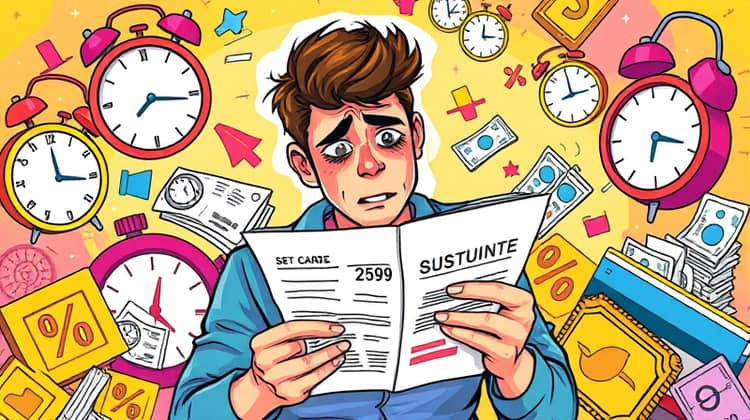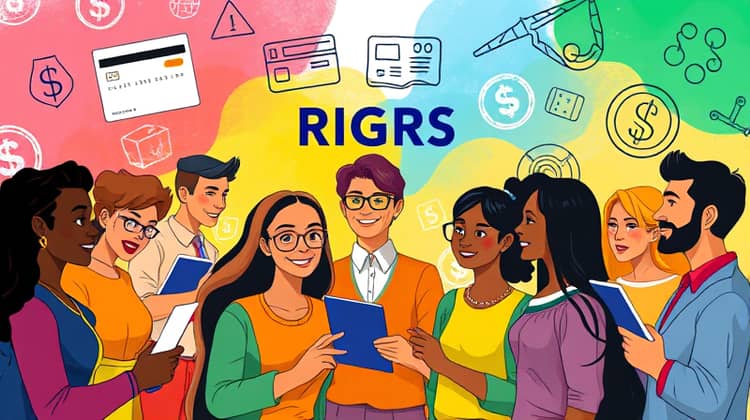Penalty APRs: How to Understand and Avoid Them

Understanding the implications of a penalty APR is crucial for anyone who relies on credit cards or loans. When used responsibly, credit can be a powerful financial tool, but a penalty APR can negate its benefits. In this article, we will explore what a penalty APR is, how it works, and what steps you can take to avoid it, ensuring that you make the most out of your credit.
By learning about penalty APRs and how they affect your financial health, you can take proactive measures to protect yourself from incurring high interest rates that can lead to spiraling debt. Let’s dive into the details.
What is a Penalty APR?

A penalty APR, or annual percentage rate, is a higher rate that credit card issuers apply when you fail to adhere to the terms of your credit agreement. This could happen if you make late payments, exceed your credit limit, or even if your payment is returned. Once a penalty APR kicks in, it can significantly increase the amount of interest you pay on your outstanding balance.
Understanding what constitutes a penalty APR is essential for the management of your credit obligations. It is typically much higher than your standard interest rate and can remain in effect for several months or even indefinitely unless you take action to reverse it.
- Penalty APRs can exceed standard rates by up to 29.99% or higher.
- They can apply immediately upon missing a payment or exceeding a credit limit.
- Creditors are required to notify you when a penalty APR is applied.
- Sometimes, penalty APRs can be triggered by actions beyond your control, like bank errors.
Penalties can harm your financial health and credit score. They can create a cycle of debt that becomes difficult to escape, illustrating the importance of understanding and preventing such situations.
How Penalty APRs Work

When a penalty APR is triggered, it usually applies to your existing balance and any future purchases made with the card. This means that for the duration the penalty APR is in effect, you will pay more in interest than you typically would. The change in your APR can make even small outstanding balances grow significantly over time, which can be particularly damaging for cardholders who are already in financial distress.
To be reinstated to your original APR, you may have to meet specific conditions set by your lender, such as making consecutive on-time payments for a designated period. This can be frustrating as it may seem like the debt is only escalating while you’re trying to make your payments promptly.
- The penalty APR usually lasts for at least six months.
- Some companies may require a certain number of on-time payments after triggering the penalty APR before they consider reverting your rate back to normal.
- Check your credit card agreement to understand how penalty APRs are applied to your account.
The mechanics of penalty APRs can create financial pitfalls that seem hard to escape, hence the necessity of being proactive in your credit management strategies.
Reasons Why Penalty APRs Are Applied

Penalty APRs are applied for various reasons as a means for credit card companies to enforce responsible borrowing behaviors. Most commonly, these penalties are due to late payments which not only inconvenience the lender but can also signify risk in the eyes of the financial institution. Other infractions may include exceeding your credit limit or having payments that bounce due to insufficient funds, both of which signify potential financial instability.
Understanding the reasons behind penalty APRs can equip you to better manage your finances and avoid the circumstances that lead to penalties. Recognizing these triggers can prevent you from falling into the debt trap often associated with high-interest rates.
- Missing a payment by the due date.
- Exceeding your credit limit for any transaction.
- Having a payment returned due to insufficient funds.
- Failing to meet the conditions of a previous promotional rate.
By being proactive and modifying your spending habits, you can effectively mitigate the chances of penalty APRs disrupting your financial stability.
The Impact of a Penalty APR

A penalty APR can drastically affect your finances, as it can lead to unexpectedly high interest charges that accumulate rapidly. If you have an outstanding balance on your card, you could find yourself paying significantly more than you anticipated, even for purchases you made months earlier. This added financial strain can make it more difficult to pay off your balances over time, resulting in prolonged debt.
Moreover, the application of penalty APRs can have repercussions on your credit score. When your debt increases due to heightened interest rates, your credit utilization ratio also rises, which can negatively impact your creditworthiness and make it challenging to secure new credit.”
- Increased monthly payments due to higher interest rates.
- Accumulation of debt that becomes harder to manage.
- Potential downgrading of credit score due to increased utilization.
Therefore, understanding the severe impact of penalty APRs can motivate you to adhere to your credit agreement more closely.
How to Avoid a Penalty APR

Avoiding a penalty APR primarily hinges on your financial discipline and awareness of the terms of your credit agreement. One of the essential strategies is to stay organized by marking due dates on your calendar and setting up reminders to ensure that your payments are made on time. You can even opt for automatic payments, which can greatly reduce the risk of missing due dates.
Another effective way to avoid triggering a penalty APR is to monitor your account for any transactions that may lead to exceeding your credit limit. Keeping your spending in check and understanding how much credit is available to you can reduce the risk of overspending.
- Set calendar reminders for payment due dates.
- Use automatic payments to ensure timely payments.
- Monitor your credit card balance frequently to avoid exceeding your limit.
By adopting these practices, you will create a more robust financial strategy that will help you stay out of the penalty APR zone while managing your credit responsibly.
Removing a Penalty APR

Removing a penalty APR can be challenging, but it is not impossible. After coming under the higher interest rate due to a missed payment or another trigger, it's essential to engage with your credit card issuer promptly. Most lenders are willing to consider a good payment history when reviewing your request to have the penalty APR removed, especially if it was your first offense.
To improve your chances, document your payment history and any changes in your financial situation that may have led to the penalty. Lenders may be willing to extend grace if they see that you are taking steps to rectify your situation.
Knowing Your Rights

Understanding your rights as a borrower is crucial when managing your credit cards and addressing penalty APRs. The Credit CARD Act of 2009 established several protections for consumers, such as requiring lenders to provide a notice before applying a penalty APR, giving you the chance to rectify the situation before excessive charges ensue. Furthermore, lenders must review your account every six months to see if the penalty rate can be lowered back.
Awareness of these rights empowers you to advocate for yourself and challenge any unjust penalty rates. If you believe a penalty APR was wrongfully applied, you can dispute it with the lender and seek resolution.
Conclusion

Navigating the world of credit can be complicated, particularly when it comes to understanding the implications of penalty APRs. Knowing how and why they are applied, as well as your options for removal and avoidance, can significantly impact your financial well-being. By cultivating good credit habits, you can maintain control over your debt and avoid the pitfalls of high-interest penalties.
Remember, the most effective strategy is proactive management. Staying organized, informed, and engaged with your financial institution will empower you to tackle any potential penalties before they become a burden.






